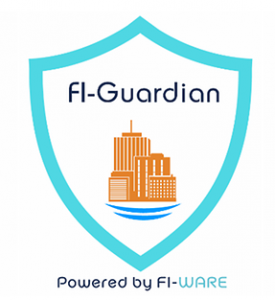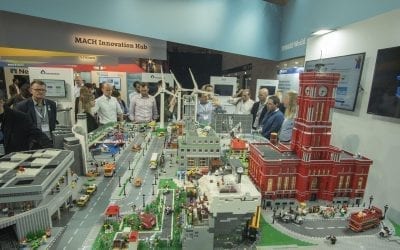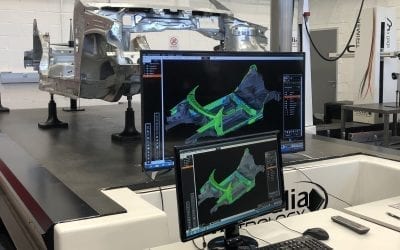"The desire to contribute to the reduction of impacts from the adverse events on the lives of people and the love for the technology" these are the reasons that lead me and my teammates to develop solutions to assist citizens and government to face, together, adverse circumstances such as natural disasters.
Due to global climate changes, researches show that adverse events of this nature will become more frequent and more intense in a near future. It means that we, citizens of the world, are increasingly exposed to risk situations.
Three years ago, we watched on TV many events taking place around the world related to natural disasters and severe weather circumstances, but it seemed far away from us, residents of a town called Nova Friburgo, located in the mountainous region of the state of Rio de Janeiro in Brazil.
But, all of a sudden, in January 2011, our region and especially our city, became the scenario of the worst natural disaster ever occurred in Brazil. At that time, unfortunately, thousands of people died and among them, some close friends and their relatives.
So, we realized that those researches were not only warnings of trends, but now a reality!
As we went deeper into our analysis, we observed that not only our city was unprepared, but a large number of cities around the world, in fact, are unprepared as well.
One year later, my teammate Viviane Lessa and I coordinated the development of a system for the local government that could use free SMS messages to guide and warn the citizens about risk situations. A public-private partnership was built to promote the development of the solution. This system was published to citizens in February 2012 and it can be accessed through the link: www.alertaviacelular.com.br
However, the idea of a more complete system has always been present in our minds, the development of a more robust solution passed through a series of technological prerequisites and infrastructure that we did not have. So, for our great happiness and surprise, we discovered the FI-WARE project when we went to Campus Party site to get tickets for the event.
It was great to explore the catalogue of "Generic Enablers" and the infrastructure of FI-LAB with the instances, templates and so on. All of these resources were entirely aligned to the needs of our larger project. We did not hesitate to apply the FI-Guardian project on Smart Cities Challenge, even without having any prior experience with this environment. FI-LAB, Mashups, Widgets, workspaces, instances, GEs, etc.. all of this was new to us but we realized how it could help us to build the working prototype of our idea.
When we received the information that FI-Guardian had been selected in the first phase of the competition we were very excited but very worried too. "And Now ?" I thought. "Will we be able to develop a prototype in time for the competition, even without experience with the FI-WARE technologies?"
We had the project design, but we did not know the technology. So, I organized the team, dividing the execution and researches tasks. Our knowledges were shared and at the end of 2 weeks of hard work we got the working prototype done for the challenge!
We asked for help to the technical staff of the FI-WARE and we were promptly oriented. And here, we would like to thank the assistance of Tali, Fermín and Paco.
In fact, the FI-WARE environment allowed us to develop the FI-Guardian prototype in a very flexible, fast and dynamic way.
FI-Guardian Concepts
FI-Guardian is a Smart Monitor for Adverse Events. For FI-Guardian, adverse events are any kind of events that impact the quality of life of citizens or expose them to risk conditions.
In this sense, these events can be classified by categories, such as: Weather events and natural disasters, Chemical and radioactive, War and terrorism, Public Health, Public Safety, Infrastructure and urban mobility, etc.
For Campus Party Brazil 2014, in order to illustrate how FI-Guardian could implement its objectives, the category of "Weather Events and Natural Disasters" has been chosen.
Fi-Guardian has 4 main objectives:
- Improve monitoring related to adverse events
- Enlarge communications channels
- Fortify alert systems
- Promote interoperability
Objective #1: To improve monitoring, FI-Guardian collects data from official institutions of monitoring, such as INEA, CEMADEN, INPE, etc. (examples from Brazil) and grants the cities an opportunity to expand the control, locally, from installing new city sensors network. All information is presented together, sharing the same workspace and maps. The cities can define new set points and new event detection rules, according to their needs and specific emergency protocols. IBM Proton techonology (CEP GE) is used to build a Smart Event Process Network (EPN).
Objective #2: The second objective is to enlarge communications channels. It aims to improve communications in 4 directions: citizens to citizens, citizens to public services, public services to citizens and public services to public services. Here FI-Guardian is collaborative and, among other functions, provide a new way to citizens ask for help. Using mobile devices or desktop computers, citizens (in trouble) can ask for help digitally. The request is sent to the public authorities in a georeferenced format. The request is plotted on a Map of the public authorities, helping them to coordinate rescue actions with more efficiency.
Objective #3: After detecting a potential risk event, FI-Guardian aims to inform it to citizens. In this sense, there are many alert channels. Some of them are already implemented and others under development. The options are: mobile buzzers (mobile devices and desktops play audible buzzer sounds), voice guidance (depending on location the citizens are, they receive, for example, a voice personalized guidance with information about the nearest safe place to go or the best procedure to take at that moment), messages posted to emergency radio frequency, SMS, digital TV and fixed buzzers.
Objective #4: In order to promote interoperability with other systems, FI-Guardian exposes a restfull API. For example, this API is being used to integrate FI-Guardian to the SMS Alert system of the Nova Friburgo City in Brazil. (www.alertaviacelular.com.br).
Click on the next link and watch a GloboTV interview to understand a little more about the project features: https://www.youtube.com/watch?v=D78fZNhcNR0
FI-Guardian and the interest of public authorities in Brazil

After #CPBR7, we were invited to present the project to public authorities in Brazil. We attended local meetings and state meetings. We also presented FI-Guardian in an open event, held during the 1st conference on civil defense in Nova Friburgo city on 15 February 2014.
The solution has aroused real interest of public authorities and one question is always present: “When will the application be available to be used by citizens ?” We answer: “Although the prototype is fully functional, it is available only on FI-LAB. But, we will continue improving it with the objective of creating a robust application and make it available as soon as FI-WARE production environment is available”.
We are sure that solutions like FI-Guardian can and certainly will save lives!
Marcos Marinho Marconi from FI-GUARDIAN



